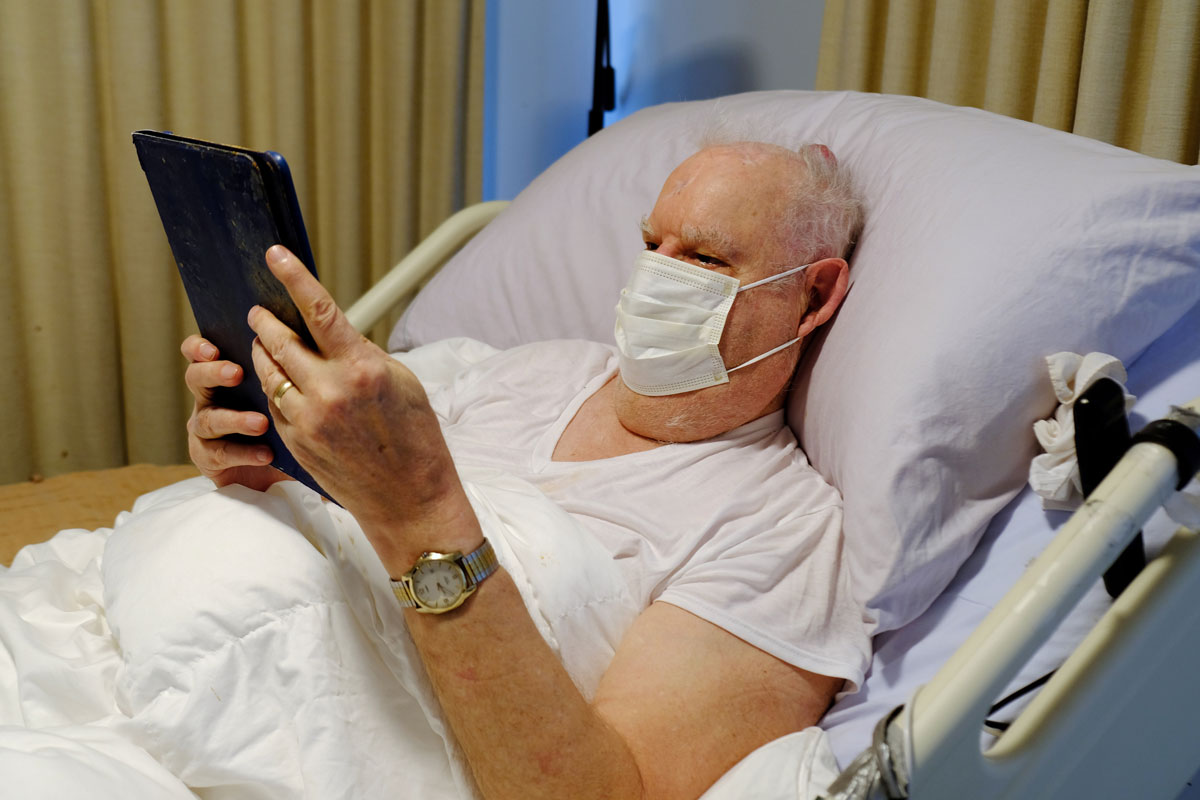At a time when important moments historically shared with family, such as the start or end of a life, commonly have become lonely times because of hospital visitation restrictions, UConn Health is using iPads to keep people connected in real time.
Using apps like Zoom and FaceTime, a father can see and hear his newborn’s first cry – and exchange smiles and tears with Mom – from outside the delivery room. Or a family can be virtually present with a patient in the intensive care unit.
The same technology helps from a health care delivery standpoint. On a COVID-19-positive hospital floor, providers can communicate with patients without having to gown up and enter the room every time, thus easing the strain on the personal protective equipment supply. In the emergency department, it can be used for certain screenings.
“We started down that path, and it made a whole lot of sense, then people’s creativity took over,” says Chuck Podesta, UConn Health’s chief information officer. “It kind of exploded into a lot of different areas. It started very small and has taken off, which is great.”
UConn Health Information Technology has 100 iPads designated for use in labor and delivery, the intensive care unit, hospital floors treating COVID-19 patients, the emergency department, and urgent care, as well as in the comfort room in the Wellness Center, where staff can partake in telehealth counseling.
“It’s been a great source of comfort for families to be ‘bedside,’” says Dr. Gracia Mui, who’s seen the technology in action in the ICU.
The iPads have carts to keep them portable. IT has protocols in place to keep the devices disinfected.
“In IT, we’re not on the front lines but we support the front lines,” Podesta says. “It’s nice to be able to equate our work to direct patient care when we can.”
Adds Dr. Scott Allen, chief quality officer and medical director of clinical effectiveness and patient safety, “We think of IT as being Epic in our approach to the care of the patient. It is clearly much more.”



